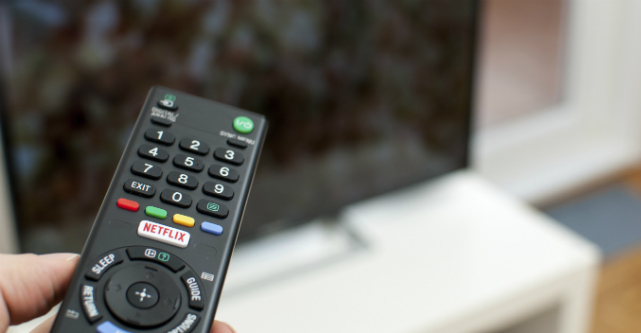Is a quota the key to getting Netflix to spend more on Australian content? – StartupSmart

By Marc C-Scott
The European Commission has released a proposal that will require video streaming services, including Netflix, Amazon and Apple to meet at least a 20% quota of locally produced (ie European) works.
This is part of a push to create a digital single market within the European Union.
In Australia, around 10% of homes have Netflix (although Stan and Presto are in less than 1%). The uptake of these services is clearly impacting the local television industry.
Whilst the Australian government has said it “has no plans to expand existing content regulations”, if the EU were to embrace a local content quota, pressure would grow for one here.
Local Content in the Australian media landscape
The question of a local content quota for online video services in Australia was raised last year. Both the ABC and Screen Producers Australia asked the government to consider a new digital content fund to which new media distributors, such as Netflix and Google, would contribute.
YouTube’s parent company, Google, responded by saying:
We care a lot about Aussie voices reaching a global audience, which is why we invest in programs like Skip Ahead with Screen Australia [a A$250,000 investment for Google], run regular creator training, and bring new business models to Australia so that creators can make money from their talents
The Skip Ahead initiative funds successful Australian YouTube creators to “make the leap to a longer narrative-driven film of at least half an hour in length”. Content produced as part of the initiative could potentially be used toward original content for YouTube’s new subscription service, YouTube Red.
This subscription service, launched here last month, is ad-free and includes music streaming and original YouTube content not available for free. Australia is the first country outside of the United States to gain access to it.
Scanning Stan’s library, Netflix’s Australian movies and Presto’s dedicated Australian Made section, it’s clear that all three provide local content. But gauging the percentage of local content within these libraries is difficult due to the continuous additions.
Stan has licensed an extensive back catalogue of content both from the ABC and SBS. Presto, as a joint venture between Seven and Foxtel, has acquired a large back catalogue of Seven content.
Despite it being within their libraries, there is a limited amount of new local content being produced by video on demand services.
Recently, Stan produced local content including Wolf Creek and No Activity. It has also announced a feature film funded with Screen Queensland, The Second. The other locally owned service, Presto, was involved in the local production Wentworth.
The international companies are yet to show the same level of participation in producing local content. Whilst YouTube has begun to show signs that it will assist, with its joint initiative with Screen Australia, it’s not clear if this will be expanded upon. Netflix, which is leading the uptake of video on demand services in Australia, has yet to fund any local production, nor show clear signs that it will.
Since the announcement of the EU proposal, Screen Producers Australia have again called for more to be done. SPA’s chief executive Matthew Deaner argued:
These are big, disruptive, successful businesses that have had time to expand in this market without making any significant investment in local production. It’s time they step up to the plate and contribute to new Australian film and television production.
In response, Andrew Maiden, the CEO of the subscription television industry body ASTRA, warned that the EU proposal:
risks adding complexity and cost to over-the-top platforms whose successful growth and innovation is propelled by the unregulated nature of their operations.
Is a local content quota, similar to the regulation for the Australian commercial free to air broadcasters, the answer to video on demand services supporting the local TV and film production industry?
Current local quotas for Australian media
Currently, Australian commercial free to air broadcasters are required to broadcast 55% of Australian content in a calendar year, as stated in the Broadcasting Services Act 1992, Commercial television broadcasters also have minimum sub-quotas in areas such as first-run Australian adult drama, documentary and children’s programs.
Nine Network argues these local quotas should be abolished, to allow it to compete with video on demand services.
Overall, it has been estimated that total local content investment in 2015, including news and sport, by free to air and subscription television was A$3 billion. As well as telling our stories, the local industry employs many Australians.
A 2015 Deloitte report shows that in 2012-2013 the film and TV sector contributed $5.8 billion to the Australian gross domestic product. This was more than Internet service providers ($1.8 billion) and slightly less than air (and space) transport ($6.5 billion).
Still, the report notes that the film and TV sector’s contribution to the GDP had in fact declined by 12.2% since 2009-2010. The period analysed within the report was before the introduction of Netflix, Stan and Presto. Despite this, revenue in the areas of distribution and rental within the film and TV sector had already begun to decline.
What now for Australian local content?
In Australia 32% of homes have a connected television – with internet access – well above the projected global penetration of rate of 26.8% in 2018. This will only increase the uptake of online video services.
It is unclear yet how a quota, or any other regulation, would be managed, but a recent draft review of the Australian Communications and Media Authority could shed some light on this. In the draft review, Netflix was given as an example that may fall under the watch of the Authority under an “applications and content” area.
While it’s clear that the new video on demand services are changing the local media landscape, a simple local quota won’t fix this. If a quota were introduced, a company like Netflix could just buy old Australian content, rather than fund original local productions.
Given that Nine jointly owns Stan with Fairfax, and Presto is jointly owned by Seven and Foxtel, a local quota could mean that these broadcasters simply redistribute the same locally made programs airing on free to air TV onto their streaming services. This would not boost local production.
For any new regulation to work, it must mandate the production of new Australian content, which would help the industry as a whole.
Marc C-Scott is a lecturer in Screen Media at Victoria University.
This article was originally published on The Conversation. Read the original article.
Follow StartupSmart on Facebook, Twitter, LinkedIn and SoundCloud.

